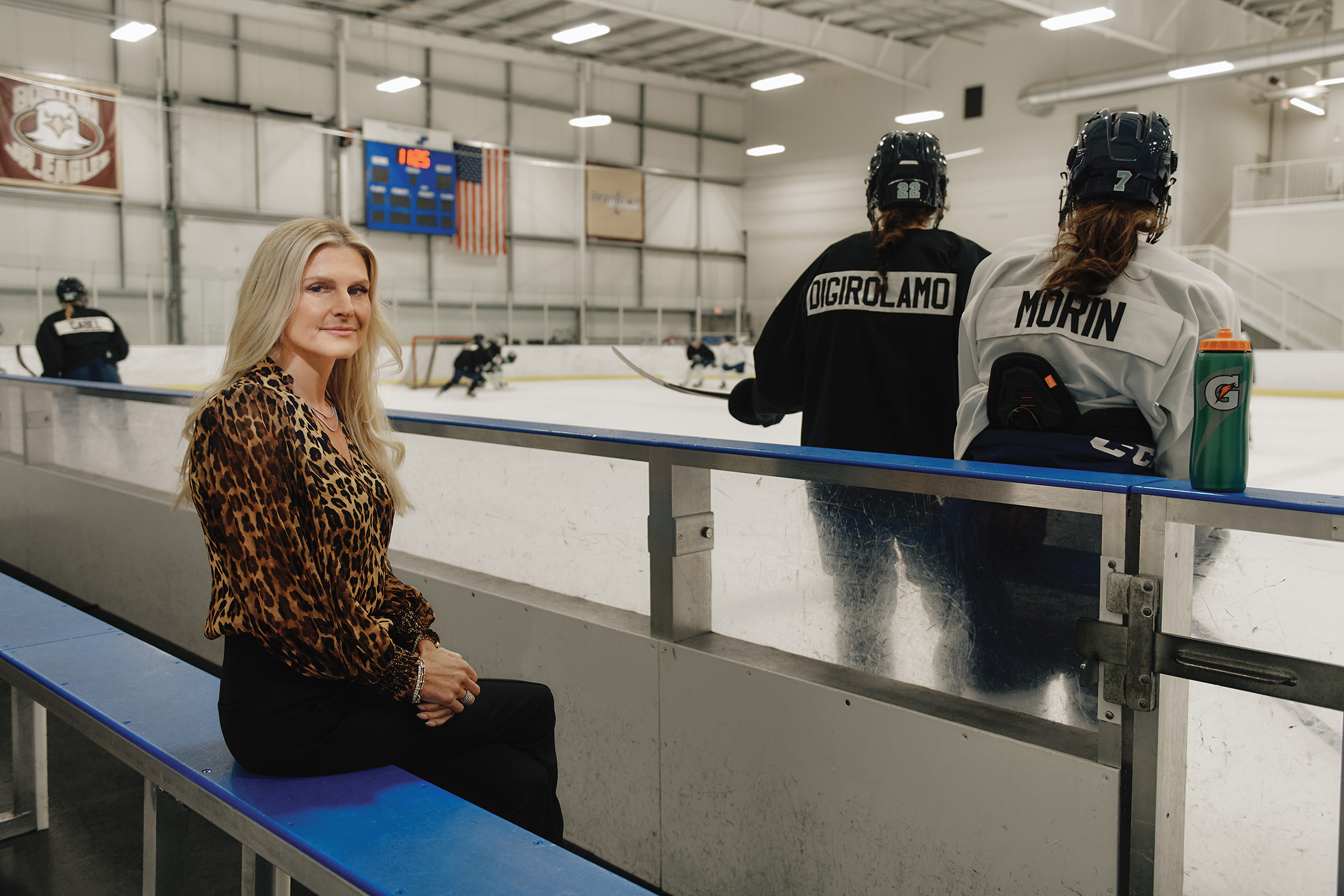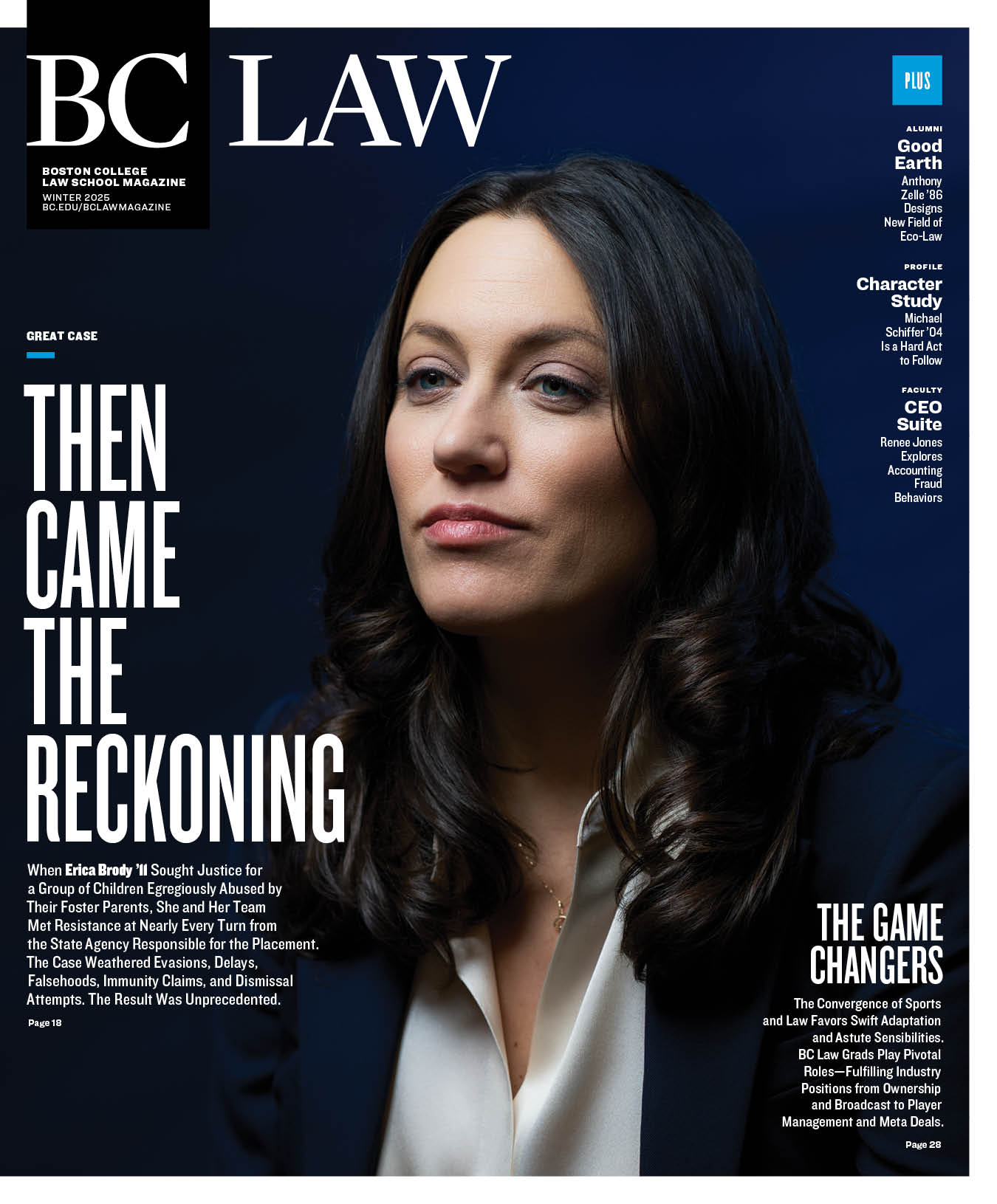Jen Flynn’s composure is impressive given her standing as general counsel of a would-be professional sports empire that a mere two years ago was just a concept without players, venues, owners, or a roadmap. Perhaps that calm is thanks to years working her way up the sports world’s legal ladder. More likely, it’s because she’s born for this.
“Sports was the soundtrack of my life growing up because my grandfather, Bill Flynn, was the athletic director at Boston College for over thirty years,” she explains. “Most kids growing up had normal vacations with their family. Mine were going to New York to watch the Big East Basketball Tournament or traveling to a bowl game. I remember being in the room during discussions about broadcast rights deals. I was around him when he was president of the NCAA as Title IX was rolling out [amidst a legally fraught framework]. That was definitely the foundation for everything for me. It’s the reason I went to BC Law (Class of 2000). It started with that continuity of community.”
Flynn joined the Professional Women’s Hockey League brain trust in late 2023 as the PWHL, then five months past its founding, rocketed toward a January 1, 2024 puck drop. She drew upon every scintilla of instinct and experience gained throughout a quarter-century of wide-ranging legal roles to help steward the six-team international league through Season 1 and into a second stage, which began this past Thanksgiving weekend. Flynn brought with her a resume rich in senior roles with the Boston Red Sox, Major League Baseball, and the global talent agency WME Sports, including a decade as general counsel for Fenway Sports Management.
“So many things had to happen over such a short span [within the PWHL], it was like building a plane while flying it,” says Flynn.
Exponential Legal Growth
Given the scope involved, the pressure-cooker time constraints Flynn has faced in her latest gig are unusual in the global athletics arena, but the labyrinthine, exacting, and shifting junctions of the law and sport on the PWHL’s plate are—ahem—par for the course. There has been a persistent evolution, both conspicuous and backstage, within the legal landscape of sports since the turn of the century. Much of this can be attributed to technological advancements and the growing complexity of sports business operations.
The rapid commercialization of sports in the Information Age means legal teams now handle more sophisticated issues like digital media rights, IP, privacy, and data security. The legalization of sports betting in the US, along with concussion protocols and player safety, anti-corruption, and entry into international markets highlight an expanding regulatory ecosystem. This involves compliance with a multitude of laws as well as codifying ethical practices across leagues and borders, which necessitates comprehensive education programs. To say nothing of the in-progress, cultural and courtroom adjudication of student-athletes as employees.
“It’s like toaster law. Whatever pops up is what we have to deal with that day. I heard that for the first time recently and I think it’s the most accurate description of my legal practice.”
Sarah Willson ’18, associate general counsel, Boston Celtics
Predictably, unpredictable defines the nature of business where sports meets the law these days. “Across the board, it’s become a much more complicated industry that needs much more legal involvement,” says Michael Wall ’88, of counsel for sports and entertainment at Foley & Lardner and former general counsel for the Boston Bruins. “The additional stakeholders involved in an arena or operations within professional sports franchises have grown as well.”
No wonder there’s a growing need for lawyers. And dozens of BC Law grads are answering the call at the highest level. To name just a few: Four-time Olympic luger Cammy Myler ’01 is an assistant professor at NYU’s Tisch Institute for Global Sport; Faisal Hasan ’09 is deputy general counsel at the digital Draft-Kings Sportsbook; Joe Rosen ’98 is a pro baseball agent with ICON Sports; Stephanie Yang ’14 is a sports writer for The Athletic; Jennifer Epstein ’95 is controlling manager for Boston Unity Soccer Partners, which is bringing a National Women’s Soccer League franchise to Beantown in 2026; Henry Booth ’25, who helped reboot BC Law’s dormant Sports and Entertainment Law Society, just scored a gig with Holland & Knight in the corporate/sports group; and the venerable Len DeLuca ’77 is currently teaching and consulting after a long career as a programming and content executive for ESPN and CBS Sports.
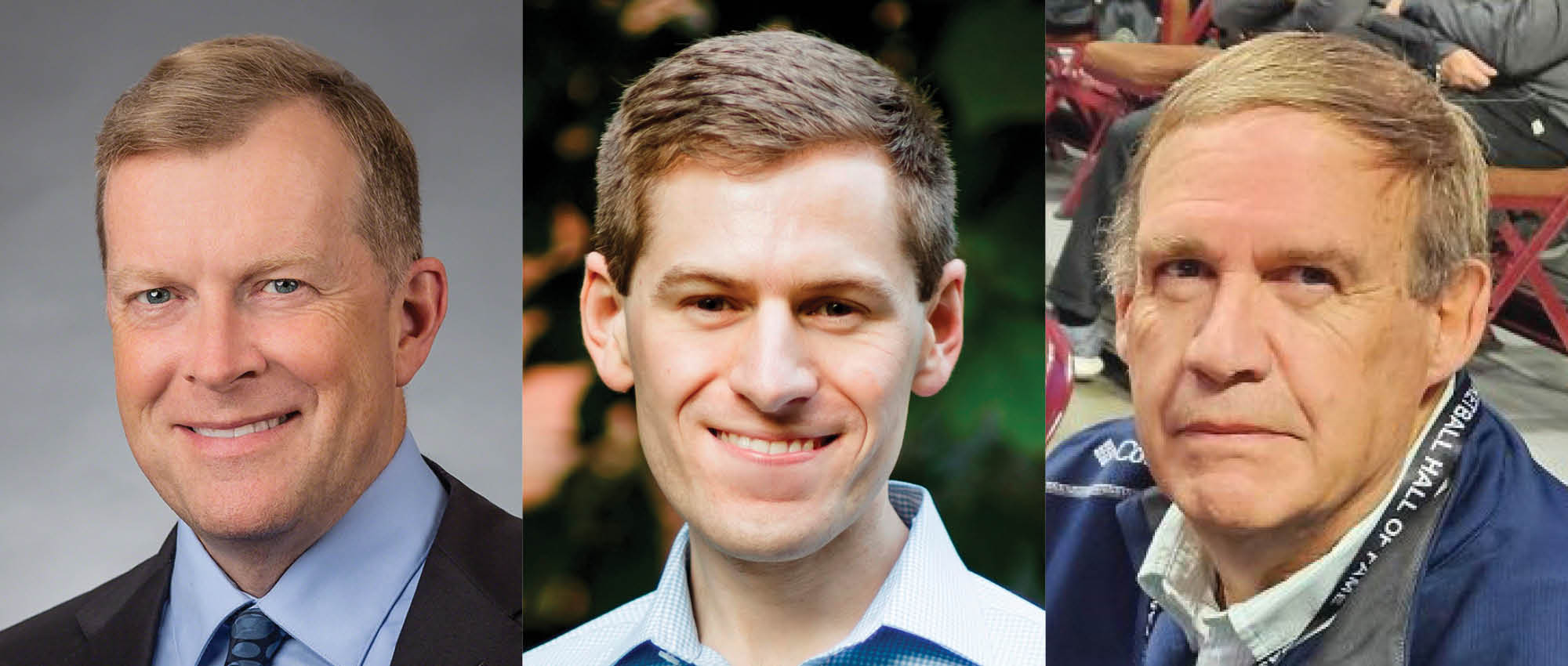
To put a finer point on this need-driven market, when Wall was serving as GC for the Boston Bruins in 1995, the neighboring Boston Celtics did not employ in-house counsel. “When I started with the Bruins, the organization had a one-page sponsorship agreement—it was double-sided,” he recalls. “You had the basic terms on the front side. On the reverse side were the fine-print terms and conditions, which were completely in the Bruins’ favor.
“The naming rights deal for the new building that same year was a five- to seven-page term sheet subject to a definitive long-form agreement that was never written,” he continues. “We lived with that short-form agreement for nine years, and it was very difficult because it didn’t get into enough detail and was constantly a source of friction and contentiousness. Today, the naming rights deals I negotiate on both sides of the table are fifty to seventy-five pages, and that’s not just because lawyers charge by the word. It’s because the assets under these agreements have grown so complicated.”
Ingenuity Required
The value of professional sports franchises has escalated at an astronomical rate. American businessman Dan Snyder bought the NFL’s Washington, DC, franchise for $800 million in 1999; in 2023, he sold the Commanders for $6 billion. Valuation like that attracts sponsors, and there’s nothing like live sports programming to capture consumer eyeballs. Brands have become much more attached to and attracted by the athletics-industrial complex. As one follows the other, media rights companies are brokering more sophisticated sponsorship and content ownership deals, all while global communications has progressed at a rate rivaling cellular mutation. That environment is fertile ground for copyright complexities.
More technologically advanced, patron-friendly arenas are being built, making stadium lease arrangements far more than just commercial real estate deals—instead featuring arena and sports-specific terms with regard to ticketing, advertising, sponsorship sales, and media rights. The segmented and more advanced sponsorship assets being delivered inside these arenas are a reflection of the technological innovations that are built-in. This requires more exacting legal advice, both to draft the associated provisions and to manage the risk they present. For example, digital activations and giveaways (contests, coupons, photo-sharing) result in an exchange of personal information, requiring suitable data collection-protection language in agreements.
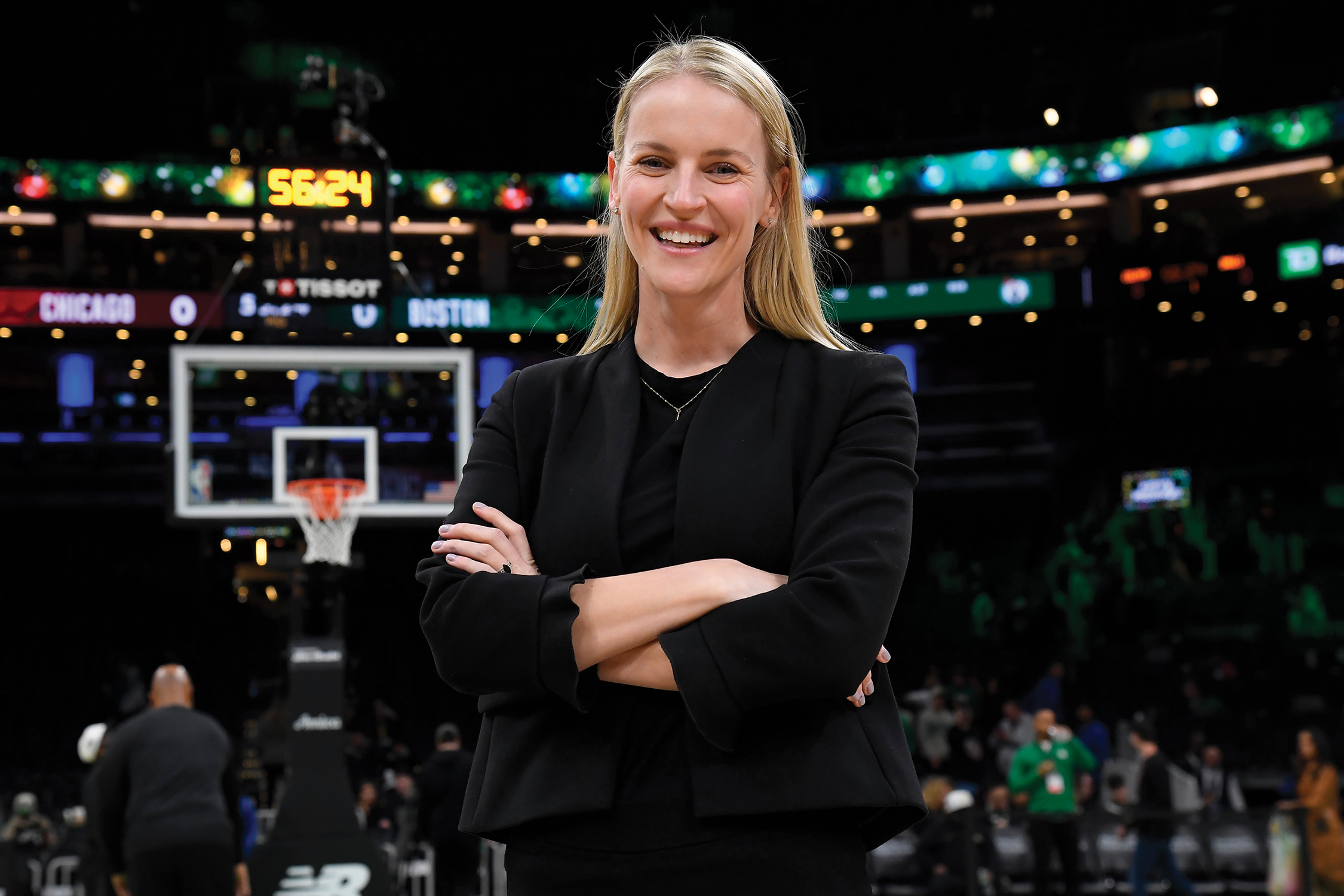
“Our general counsel calls it ‘toaster law,’ meaning whatever pops up is what we have to deal with that day,” says Sarah Willson ’18, associate general counsel for the Boston Celtics. “I think it’s the most accurate description of my legal practice.”
Everything from concessions to premium seating to game-day fan interface is a part of that. All requiring talented, versatile attorneys manning keyboards with fleet fingers. The products and services that teams need to provide have evolved, and they’re serving a different population in a completely different way while peddling revolutionary assets.
“There is so much interplay within the business that you need to think about,” says Jamie Hacker ’13, a Manhattan-based VP in the National Hockey League’s legal department. “How do the IP rights you’re negotiating also impact what you can show inside the venue? What can you make available on a game day? Or, how do drone policies affect player safety, fan safety, and even what’s advertised in the venue? There are so many pieces of every decision made that all aspects of the business need to consider in conjunction with one another, and those instances have grown over the years and the analysis involved has become more complex.”
The decisions Hacker helps to make play out on a relatively tight timetable. Which makes Flynn’s crucible throughout the NWHL’s microwaved launch and into its sophomore year all the more jaw-dropping.
“I still can’t believe that everything came together the way that it did in such a short time,” says Flynn, a two-sport college athlete at Bowdoin, who notes that Year Two at the NWHL came with challenges like contracting new arenas for nine neutral-site games, onboarding new corporate partners, and settling IP arrangements for the two clubs that didn’t even have official nicknames last season. “[It was accelerated] on the hockey ops side of it, for example, getting medical providers in place, as well as on the business side. We’re all still fully remote. There are no league offices, so it’s an interesting case study.”
“Across the board, it’s become a much more complicated industry that needs much more legal involvement. The additional stakeholders involved in an arena or operations within professional sports franchises have grown as well.”
Michael Wall ’88, sports and entertainment lawyer, Foley & Lardner
Richard Kent ’75 is also working in a state of flux. He spent the better part of four decades as a commercial and child custody litigator for a pair of large, Connecticut-based firms, but he’s suddenly living out a first-mover’s advantage in a legal arena encompassing athlete rights and collective bargaining that didn’t really exist four years ago.
Student-athlete compensation with regard to use of their name, image, and likeness (NIL), along with issues of equitable revenue sharing and the management of player welfare, comprise what Kent calls a “frontier economy.” The still-unfolding boundaries and borders of NIL rules and associated case law (O’Bannon v. NCAA in 2014 and NCAA v. Alston in 2021, plus the 2024 House v. NCAA settlement awaiting final approval) are too weighty to explore here.
Suffice it to say that Kent, a lifelong sports fanatic now in his mid-seventies, is operating at the forefront of an emerging market. Back in 2016, he formed a partnership with another lawyer with an eye toward the O’Bannon ruling, which held that the NCAA’s rules and bylaws constituted an unreasonable restraint of trade by prohibiting student-athletes from being paid for their personal brand worth.
Kent started forming collectives. Often founded by prominent alumni and influential boosters, school-specific collectives pool funds from a wide swath of donors to help create NIL payment opportunities for student-athletes through an array of activities. Kent worked with Penn State, Rutgers, Oklahoma, Georgia Tech, Bryant, Towson, and others. He became a guy you talk to when assessing the crosscurrents of student-athletes as employees.
Kent forecasts that NIL will be a boon for young lawyers. “When I got into (NIL legal matters), there weren’t a lot of people in the space, but plenty of people are occupying it now. Those opportunities didn’t exist when I got out of law school and [multinational] sports agencies like IMG weren’t what they are now. There were entry points in this space even before collectives happened, before pay-for-play happened. Now, there are even more, and we’re seeing big dollars moving toward women’s college basketball as well.”
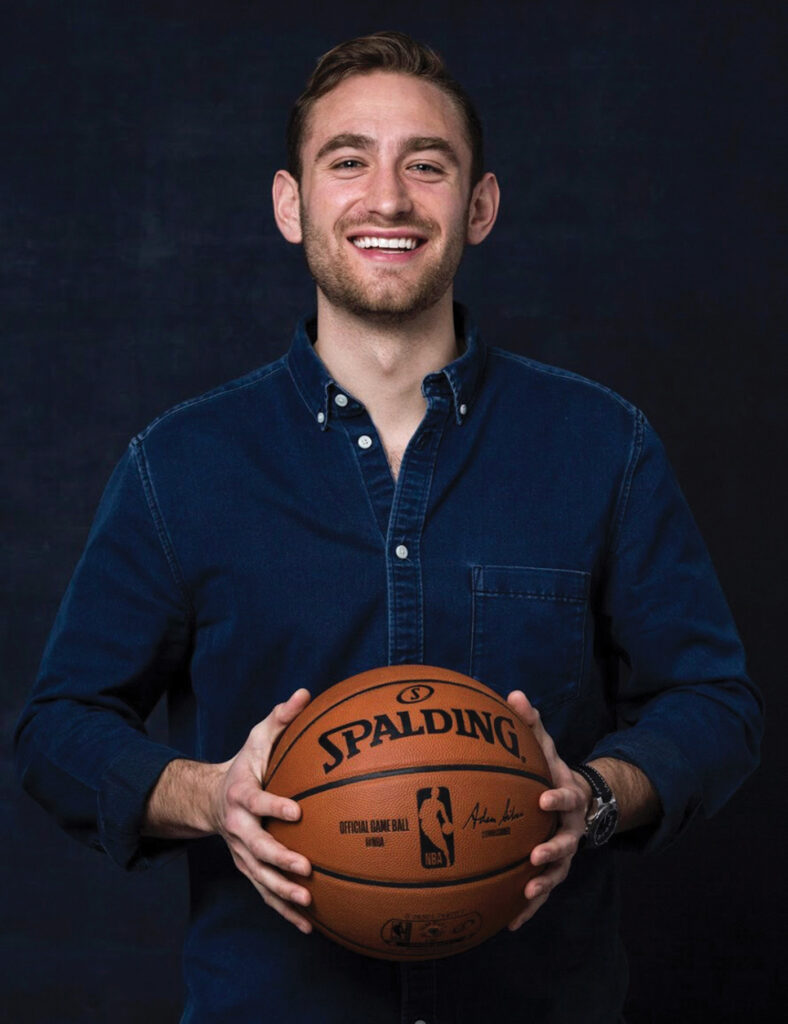
Talent Wins
Willson, the Celtics’ associate general counsel, likes to say that “sports law” doesn’t truly exist. That’s because any lawyer in the industry needs to be familiar with diverse legal domains and be capable of advising on a range of matters from garden variety to conjoined and complicated to newly emergent.
“You have to know so many different areas of law and you have to know just enough in each of them to be dangerous in all of them,” she says. “Basically, you’ve just got to be a really good lawyer and then apply it to sports. That’s proven to be true even more so as I advance and as I’m seeing things I haven’t necessarily seen before. Inevitably, I’ve encountered something similar, so I can arrive at the approach we should take, then access the resources that confirm I’m taking the right approach if necessary.”
As director of compliance for the NFL, Nick Macri ’14, has run across that same phenomenon. In his seven years as an associate at Ropes & Gray, he worked on multiple SEC investigations involving insider trading and private equity matters. This informs his day-to-day to this day.
“My world is really ethics and integrity—that’s so much of what our compliance group does,” Macri says. “The three things I think about most are general corporate ethics, anti-corruption, and our gambling policy. That last one is kind of like insider trading from my past experience. It’s a similar concept. Much of this job is education. We’re reaching global markets with games and other sponsorship and rights deals, so that’s a whole new set of laws that apply to the league and the teams that engage in these different markets. Our compliance group is the lead on providing education, issue-identification, and guidance as we navigate international territories.”
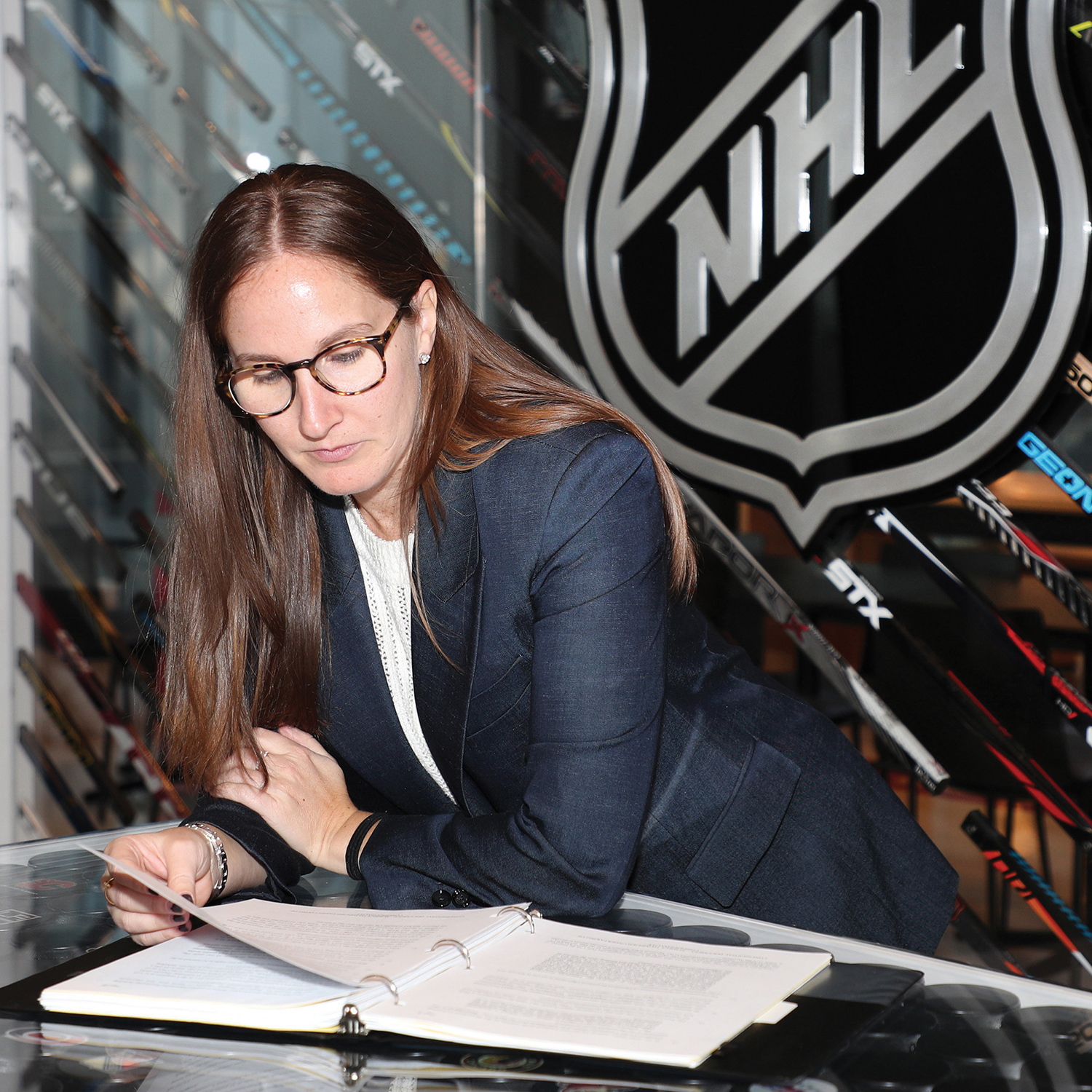
Work histories that encompass competing loyalties provide an added layer of experiential savvy. That’s certainly the case for Kent Hughes ’95, a highly successful sports agent for twenty-five years, who represented some of the NHL’s biggest talents making some of the highest salaries. Three years ago, he became an unconventional hire by one of North America’s most prolific sports franchises—the Montreal Canadiens—as the club’s eighteenth general manager. To be clear, this means that among other things, he’s primarily responsible for player acquisition, roster management, and overseeing player earnings in a league with the most rigid salary cap of the continent’s four major sports federations.
That’s a long way from 1L. Depending on your point of view, that also means he went from wearing a white hat to a black hat. Or vice-versa.
“A collective bargaining agreement is 650 pages of hockey legalese,” says Hughes. “What I learned in law school was that CBAs are generally negotiated under immense time pressures like during a strike or a lockout and you have teams of lawyers in a rush to agree and negotiate. Inevitably, there are ambiguities in the final product. As an agent with a law degree, I could identify the gray areas and take a position for the benefit of my client.”
And now?
“Having sat on the other side of the table and understanding the pressure points for an agent, that’s helpful to me as a GM,” he says. “I can speak to how strong of a consideration an issue has been for players and the players association. I also understand the different vehicles or mechanisms available from a tax planning and signing bonus perspective, so having command of a lot of moving parts helps us come up with something equitable.”
Talk to almost any retired pro athlete and they’ll confess what they miss most about playing the game is their relationships with teammates. Anecdotally, teamwork is a powerful motivator for those interviewed for this story as well.
“I was standing at the podium at a staff summit recently and I looked around and I realized that short of a few people who’d just joined the organization, I had worked on at least one project with everyone there,” says Willson, who played basketball at the University of Chicago. “I was looking across the organization from team president to CFO to basketball operations to the marketing group. I’ve always been more relationship focused. The work itself is interesting, but I think the way we work together is what keeps me engaged. I don’t know if that type of daily collaboration is everyone’s dream job, but it’s mine.”


